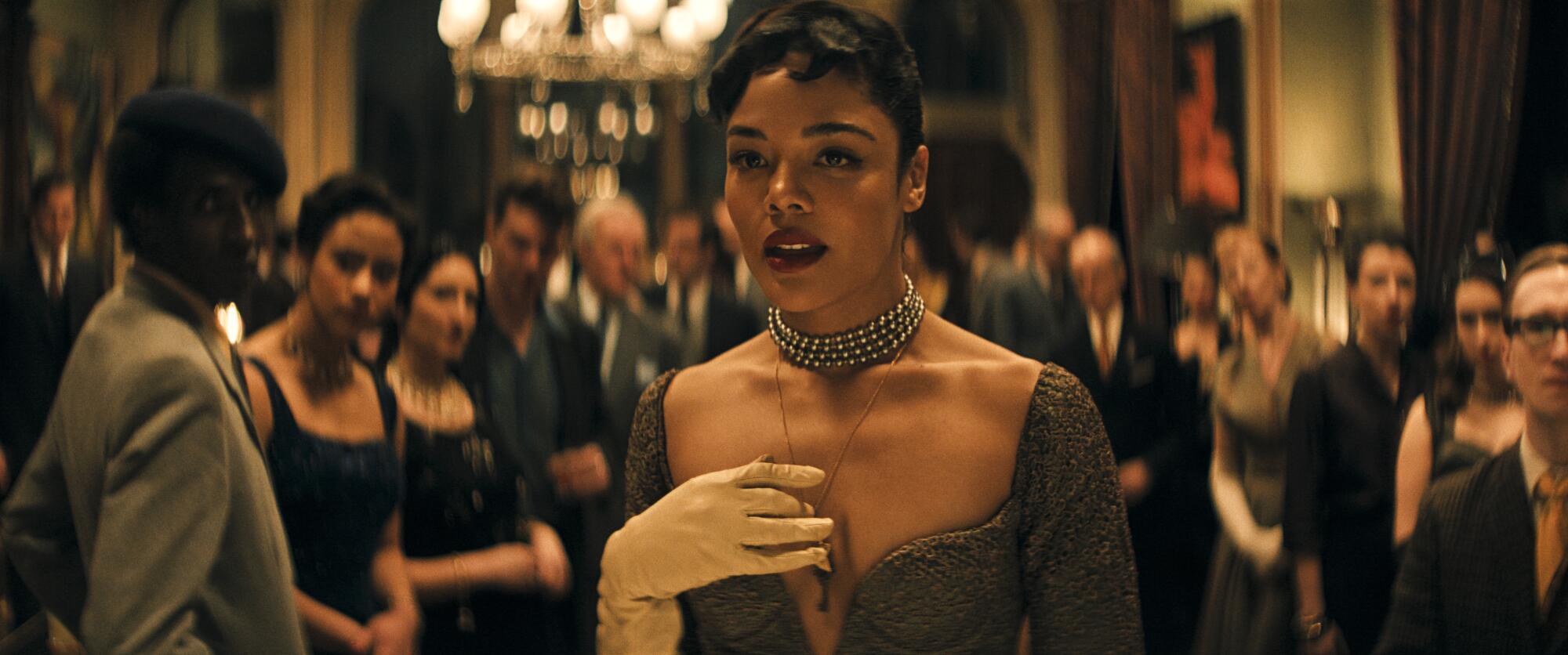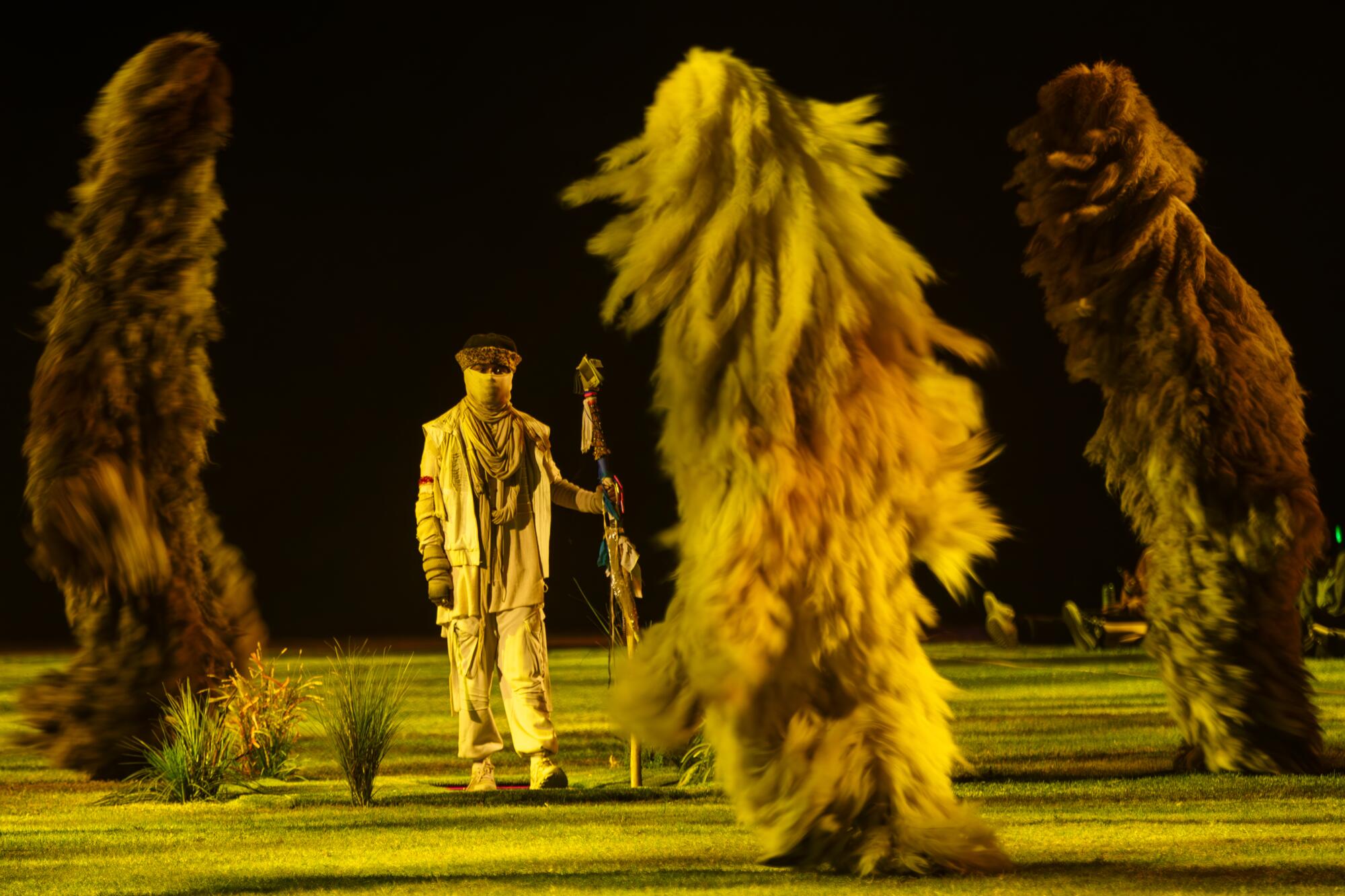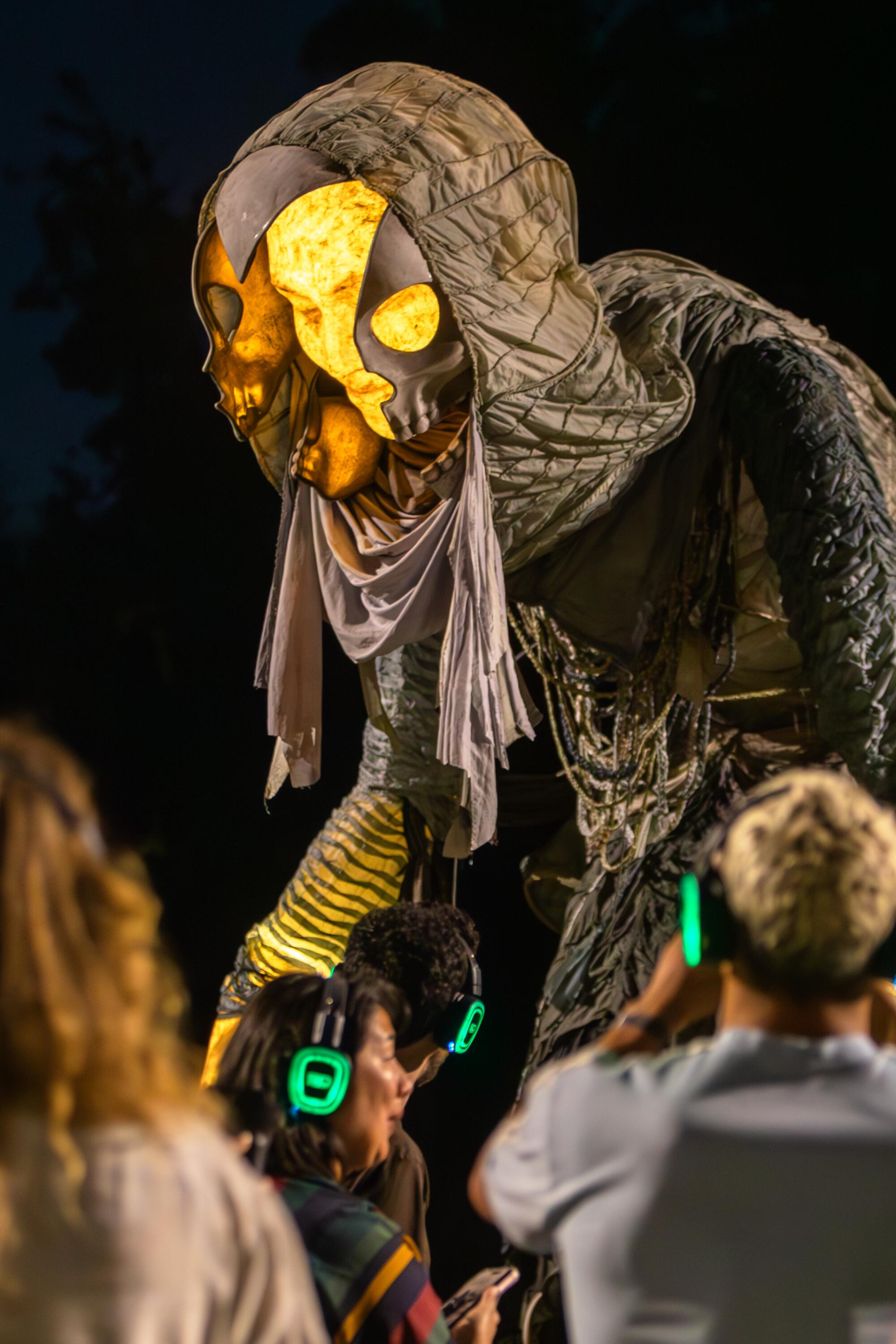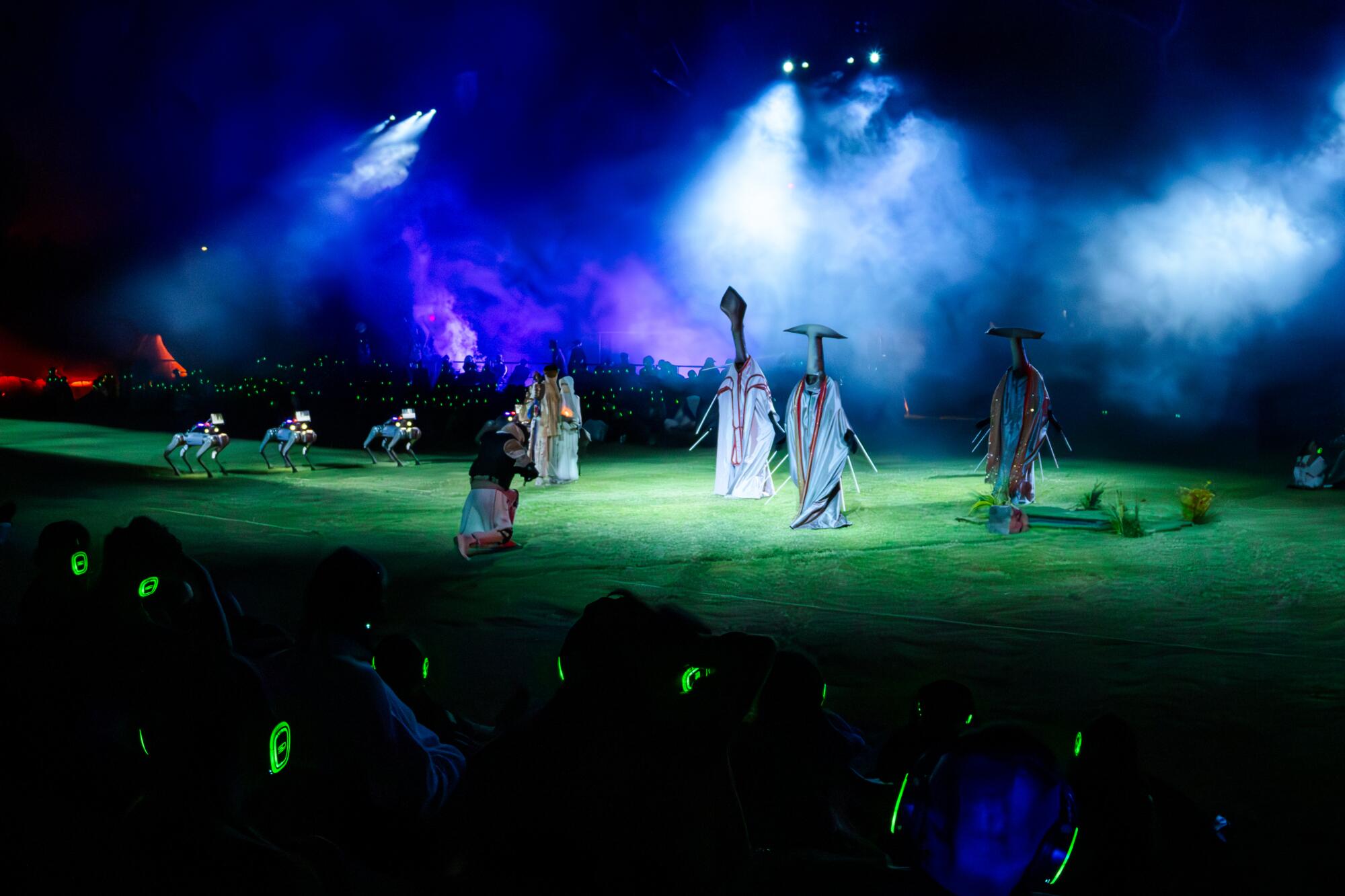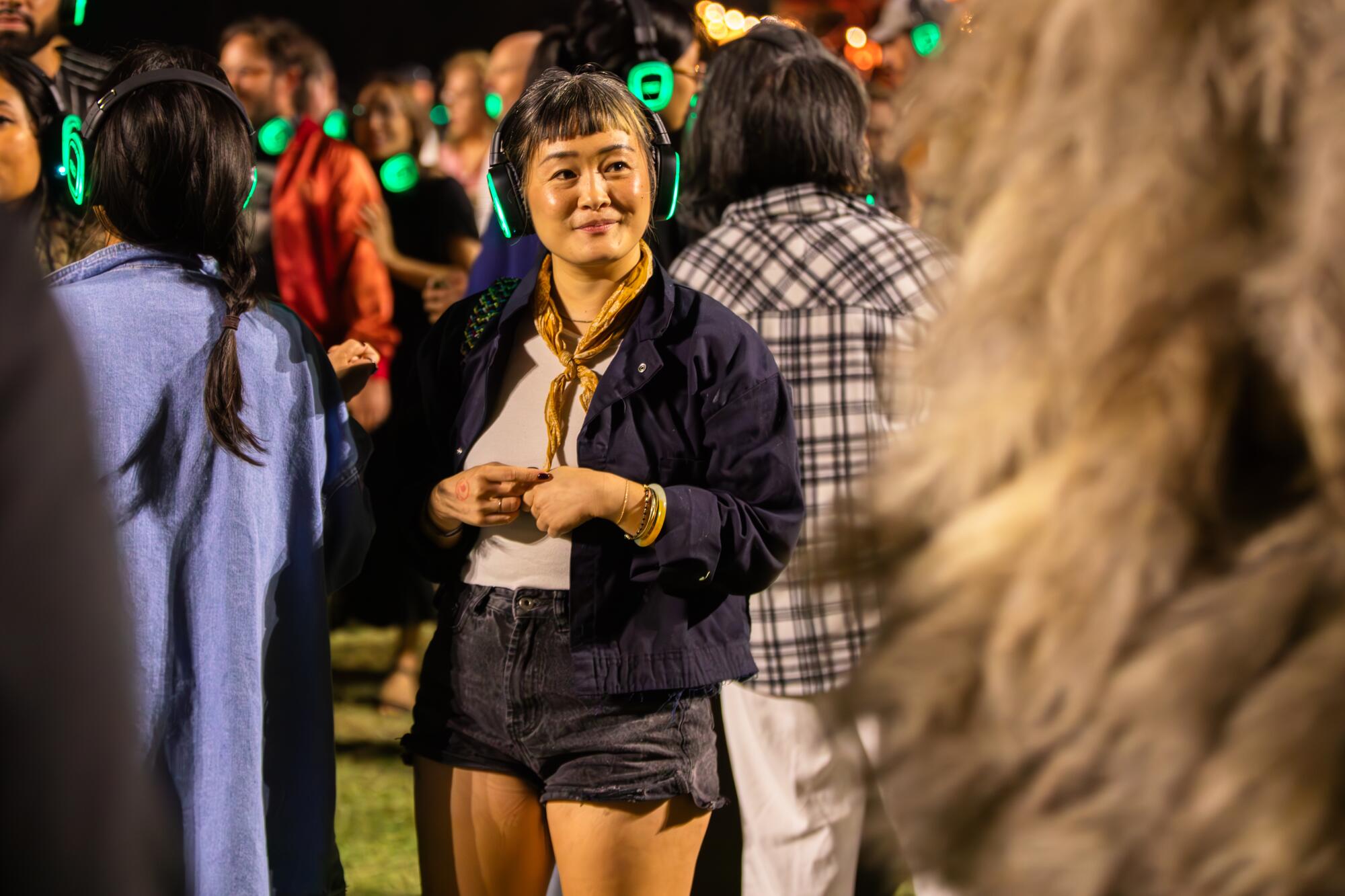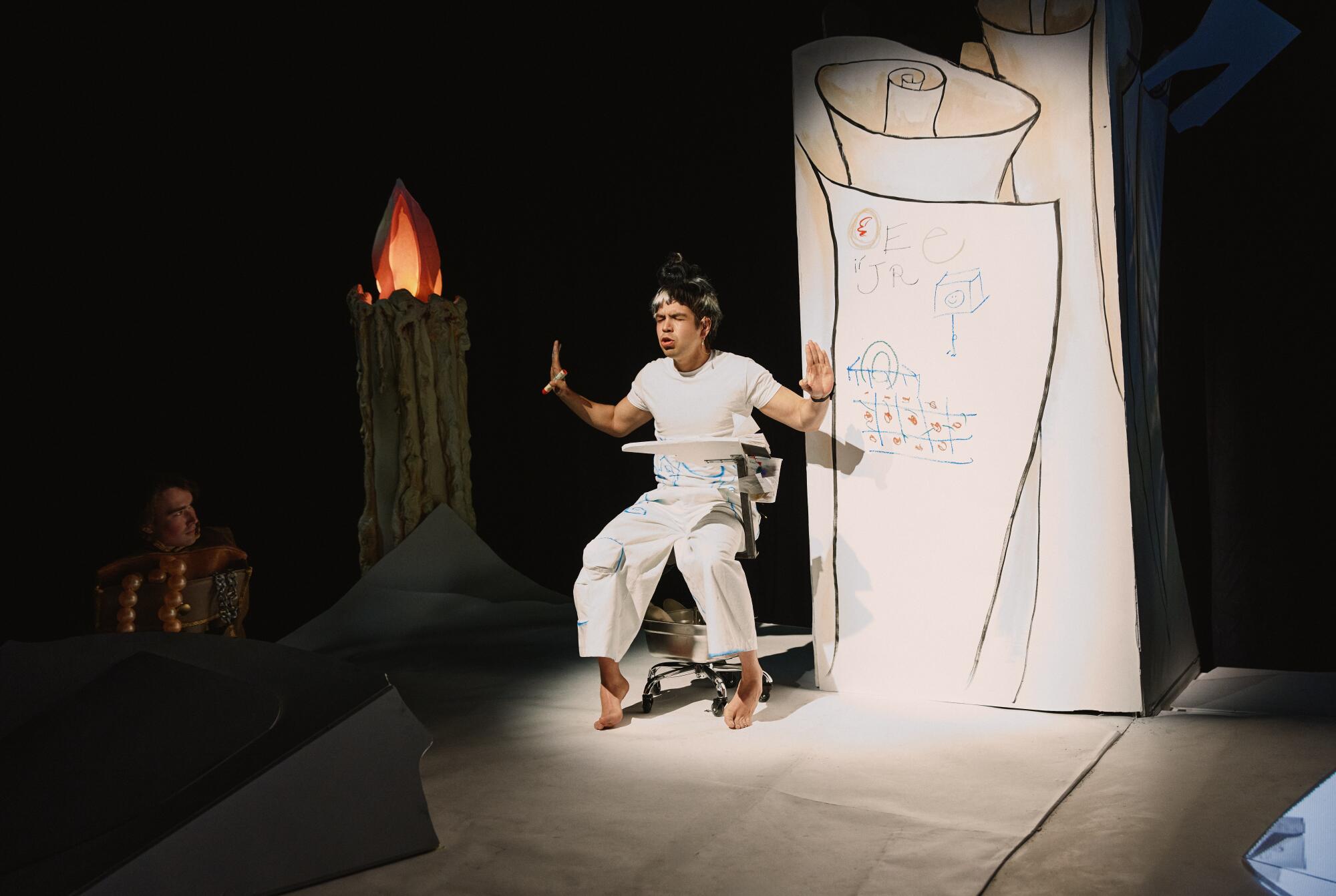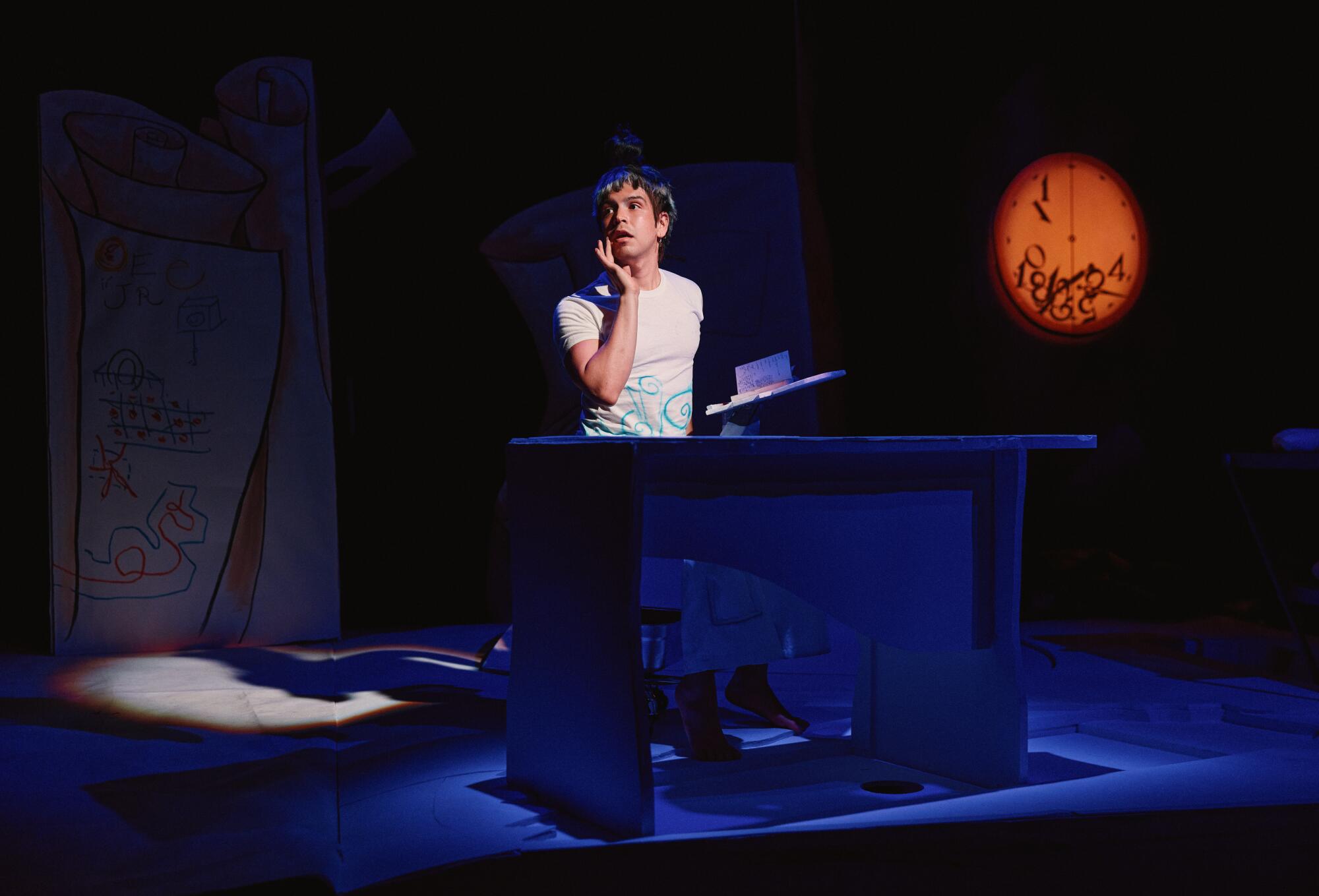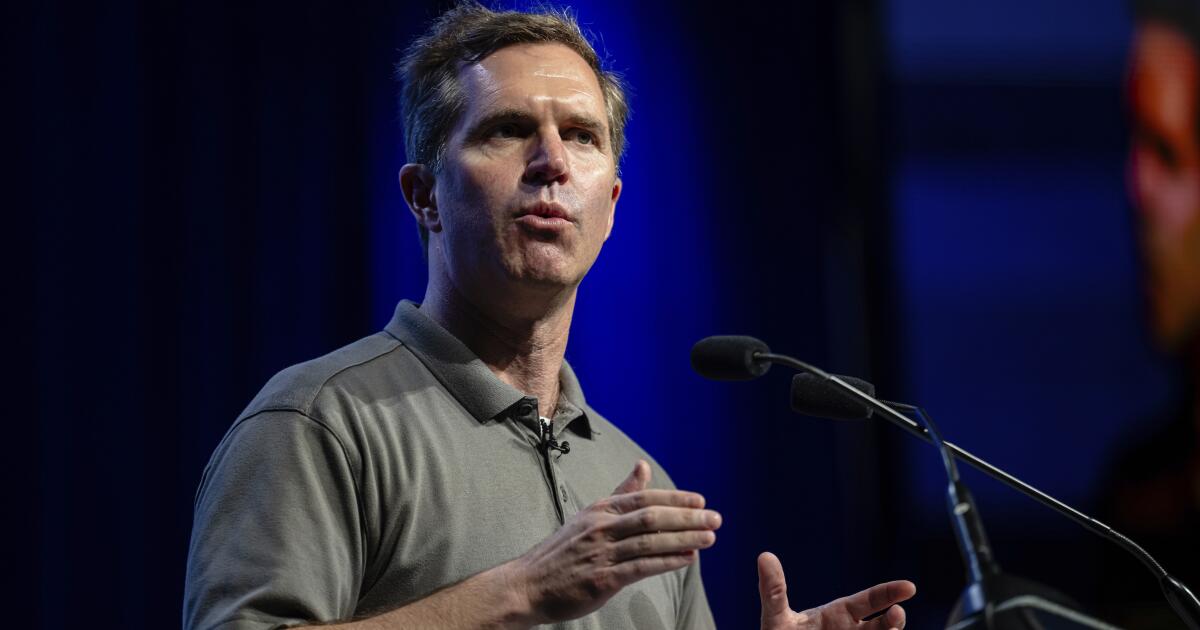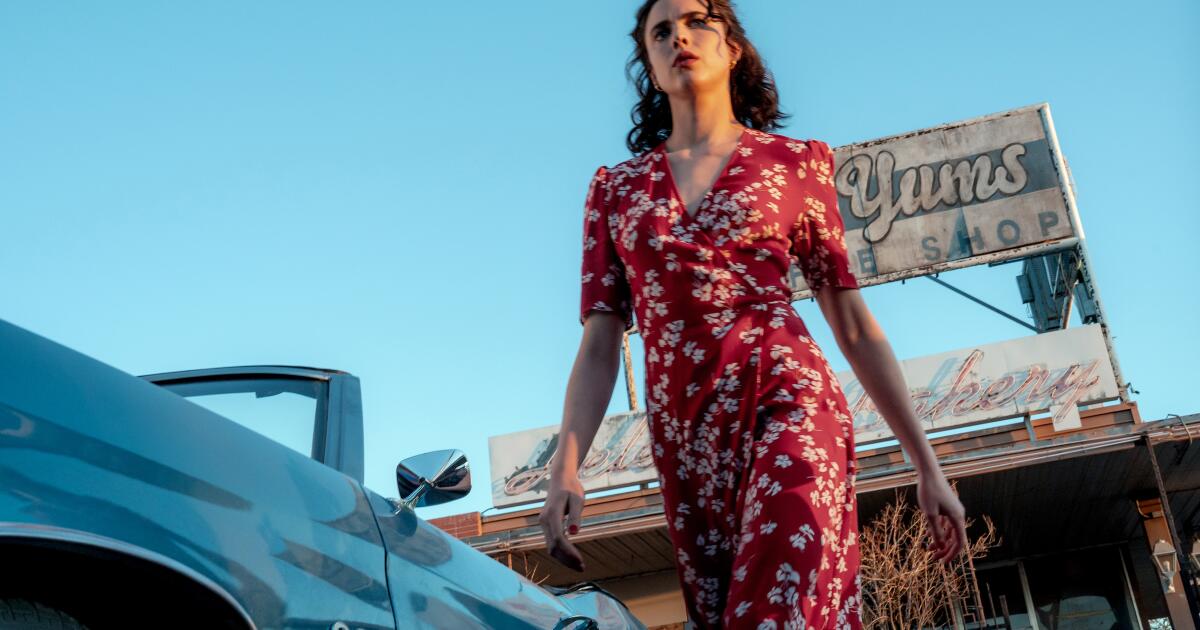TIFF 2025: ‘The Smashing Machine’ and ‘Christy’ enter the awards octagon
Movie fans come to Toronto to get an early peek at the year’s awards heavyweights. I didn’t see a knockout punch, but I saw some strong contenders — and in a couple cases, I just got bludgeoned.
Directors Benny Safdie (“Uncut Gems”) and David Michôd (“Animal Kingdom”) faced off with competing docudramas about the sufferings of two professional brawlers whose careers peaked in the ’90s — i.e., new “Raging Bulls” for today’s nostalgists. “The Smashing Machine” is a solo effort from the younger Safdie brother after making a string of energetic cult hits with his sibling, Josh. It stars Dwayne “The Rock” Johnson as MMA fighter Mark Kerr, who could beat almost anyone inside the octagon but struggled to conquer his own demons at home with his then-wife, Dawn (Emily Blunt).
Based on the names and talent involved, I was expecting anything other than what I got: a conventional biopic. Its one bit of flair is a commitment to looking as though it was filmed on VHS. But projected in Imax, it just looked dreary (as did Johnson’s hairpiece). I’ll go another round with it in a more apropos ring.
Michôd’s “Christy” shares several of the same touchstones — the bloodrush of victory, a bruising domestic life, a distracting wig — but gender-flipped. Sydney Sweeney throws a convincing jab as Christy Martin, the first female boxer to make the cover of “Sports Illustrated.” A lesbian from a conservative West Virginia family, she was pressured to hide her sexuality by wearing pastel pink in the ring and marrying her much older, emotionally abusive male coach, Jim Martin (Ben Foster). The script only has a few ideas under its belt, but they’re effective, particularly our dawning recognition that while Christy thinks she’s fighting to prove her worth, she’s really fighting for the patriarchy.
Sweeney is good, even when the leaden dialogue does her a disservice. It’s her first substantial, serious part since 2023’s underseen “Reality” and she seizes the opportunity to be talked about as something other than the internet’s most polarizing ingenue. (Social media is forever singling out one young actress to be damned now and redeemed later, sigh.) As for Foster, who first snagged my attention as the pathetic loon in “Alpha Dog,” he knows how to play a hiss-worthy heel. You spend “Christy” aching to see him get socked in the face. If you need him to take more punishment, he’s just as vile in another TIFF title, “Motor City.”
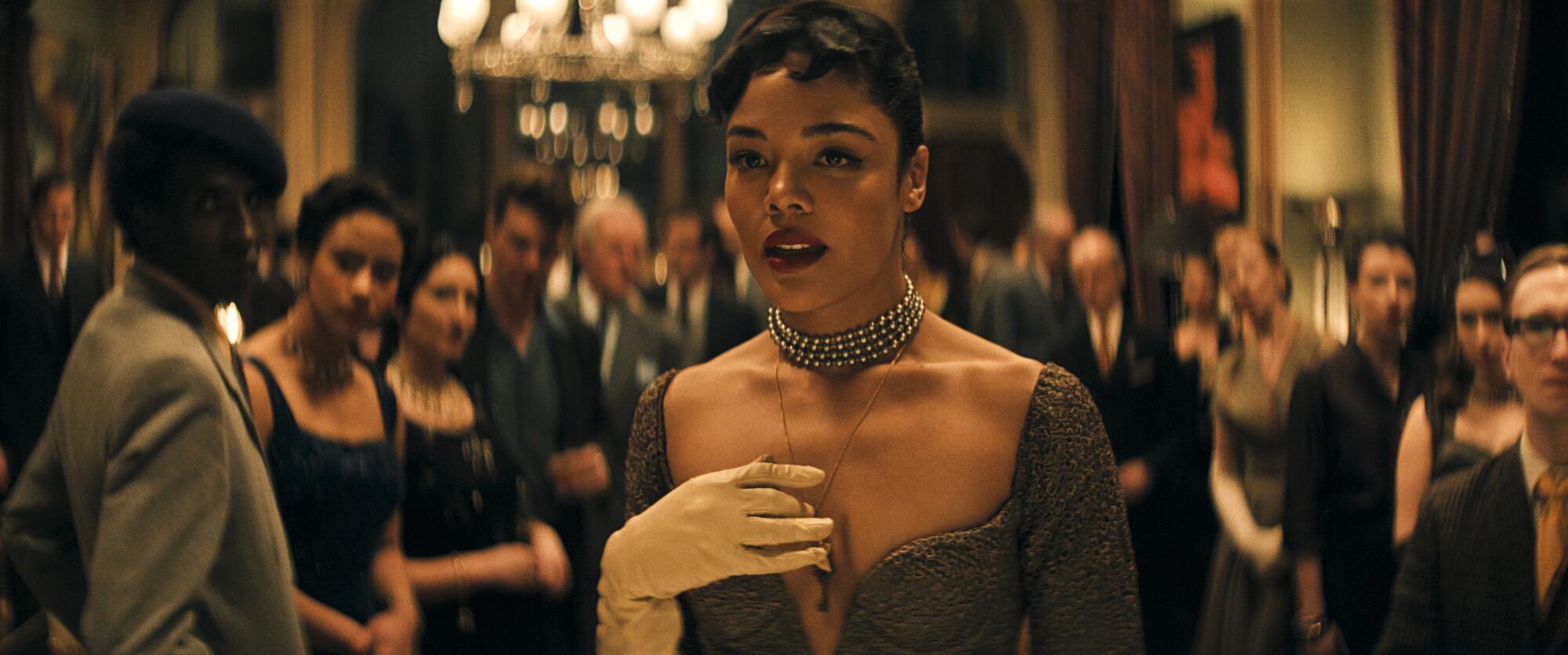
Tessa Thompson in the movie “Hedda.”
(Prime Video)
At this year’s festival, ladies in corsets did more damage than gals in padded gloves. My favorite mean girl — perhaps even my favorite film of the festival — was Nia DaCosta’s “Hedda,” a devilish and dynamic adaptation of Henrik Ibsen’s “Hedda Gabler,” in which the lead character (played by a fantastic Tessa Thompson) starts firing off her daddy’s old pistols as soon as the opening credits. DaCosta, who also adapted the play into a script, restages the action so that the chaos all takes place during a giant, drunken bacchanal at a rented mansion Hedda can’t afford. Thompson’s scheming newlywed manipulates the other characters with the confidence of a queen who controls all the pieces on the board, but every so often she simply has to flip the table over. The spirit is faithful; the subtext is fresh.
“Mārama,” a striking feature debut by Taratoa Stappard, bills itself as a Māori gothic and the combination works. In 1859 England, a white-passing woman from New Zealand named Mary (Ariāna Osborne) has sailed halfway around the world seeking information about her parents. The globe-trotting lord Sir Cole (Toby Stephens) strong-arms her into becoming his niece’s governess, calling the Māori a “magnificent people” while amusing his guests with parlor room reenactments of whale-hunting expeditions done with massive puppets. “Mārama” doesn’t reinvent the wheel, but it’s a good ride with first-rate cinematography and production design and a story with one or two more surprises than we expect.
Similarly, “Honey Bunch,” co-directed by Madeleine Sims-Fewer and Dusty Mancinelli, is another manor-bound thriller that toys with familiar tropes. An amnesiac bride (Grace Glowicki, a go-for-broke oddball who always gets my attention) arrives at an isolated and secretive trauma center where everyone seems to be screwing with her memories, including her shady husband (Ben Petrie). Straightaway, we have our suspicions about how this is going to go. The first half of the film doesn’t deviate from the formula — it’s a little dull — but the second half is a superb right hook.
Guillermo del Toro’s grisly, occasionally great “Frankenstein,” shot in Toronto and the U.K., hews more faithfully to Mary Shelley’s novel than the 1931 Boris Karloff classic, scrapping the mob of pitchfork-wielding villagers and salvaging the wraparound story of an ambitious explorer marooned in the the Arctic ice. But it’s still very much Del Toro’s own monster. One of his smartest adjustments is retooling the romantic heroine, Elizabeth (Mia Goth), from the ideal childhood sweetheart to a science-loving pacifist with limited patience for egomaniacs like Oscar Isaac’s Victor Frankenstein. Costume designer Kate Hawley makes Goth look like an exotic beetle with antenna-ish plumes sticking out of her hair.

Jacob Elordi as the Creature in the movie “Frankenstein.”
(Ken Woroner / Netflix)
Jacob Elordi’s creature amps up the pathos a tad too much for my taste, but there’s no denying how much he’s invested in the role, or how well Del Toro’s critiques about narcissistic inventors suit the present day. Still, Del Toro knows there’s a time and place to boast: At the film’s Toronto premiere at the Princess of Wales Theatre, he playfully accused his local below-the-line crew of being too humble and made them stand up for applause. “Stop being so Canadian,” he teased.
Del Toro told the audience that when he first saw Karloff’s creation as a boy, he thought to himself, “That’s my messiah, that’s the guy I’m going to follow like Jesus.” But the prize for the most idol-worshipping film in the festival belongs to Baz Luhrmann’s “EPiC,” which stands for “Elvis Presley in Concert.” Constructed from hours of previously unseen live footage from Presley’s stint in Las Vegas, its rapturous showing felt like attending the church of Elvis.
Luhrmann insists that “EPiC” is neither a concert film nor a documentary. I don’t see the issue with calling it either, but it’s also fair to consider it a companion piece to Luhrmann’s 2022 “Elvis.” It certainly shows that Austin Butler’s Oscar-nominated portrayal of the King wasn’t one rhinestone over the top. Here, the real Presley is charismatic as hell, and looks great beaded in sanctified sweat. Whenever he throws a damp scarf into the audience, the women go so crazy you’d think it was the Shroud of Turin.
Luhrmann continues to be outraged that Col. Tom Parker constricted Presley’s artistic growth by parking him in the city of buffet tables rather than letting him tour the world. Presley only did one week of international concerts during his entire career: five shows in Canada, two of them just a 10-minute drive from my theater. You can hear Presley’s resentment toward the better-traveled (and at the time, better-respected) artists stealing his spot on the charts. “It’s so dry in here, I feel like I’ve got Bob Dylan in my mouth,” he jokes. Later, he slings a guitar around his neck to strum “Little Sister,” and then speeds up the tempo and starts belting the Beatles’ “Get Back,” a subtle dig that the boys from Britain weren’t always that original.
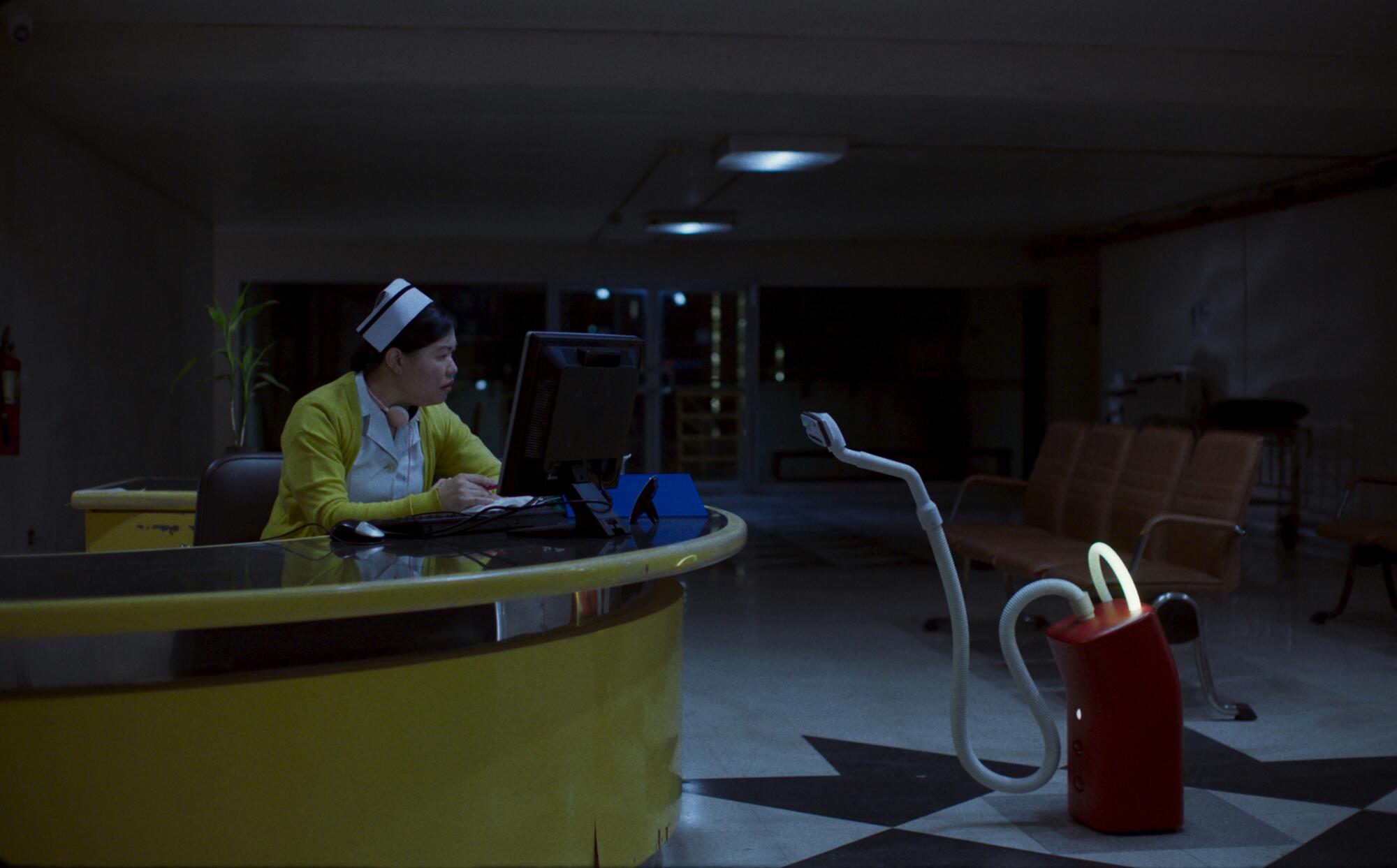
A scene from the movie “A Useful Ghost.”
(TIFF)
Speaking of, I can’t wrap up my final dispatch from this year’s Toronto International Film Festival without mentioning the most creative Oscar contender I saw all week: “A Useful Ghost,” which won the Grand Prix of Critics’ Week at Cannes and will be Thailand’s entry for an Academy Award. Ratchapoom Boonbunchachoke’s arch hybrid of horror, comedy, romance and political thriller starts when a self-described “academic ladyboy” (Wisarut Homhuan) discovers that his new vacuum cleaner is possessed. From there, the movie defies prediction at every turn.
I ducked into “A Useful Ghost” on a whim, wondering how it would pair with TIFF’s world premiere of “Dust Bunny,” a nice and nasty Roald Dahl-esque adventure in which a little girl hires Mads Mikkelsen to battle a man-eating monster under her bed. I came out of the theater abuzz with energy. Even though some of this season’s noisiest awards hopefuls are rooted in classic genres, there are still directors making movies that feel entirely new — and still audiences delighted to cheer for a big swing.
